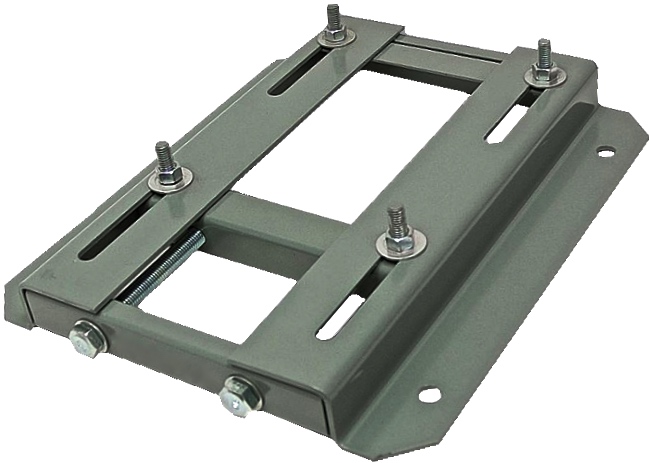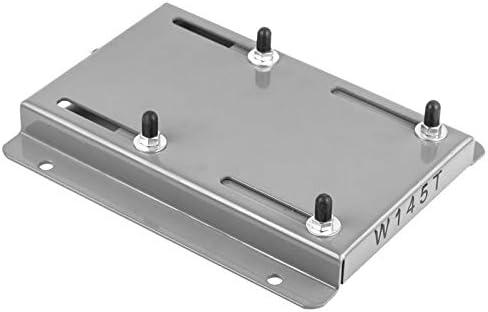Product Description
ZheJiang Shine Transmission Machinery Co., Ltd is specialized in manufacturing and selling transmission products. Our products are exported to the world famous machinery company in Europe, America, South Africa, Australia, Southeast Asia etc.
Our main products include: European pulley, American pulley, Couplings, taper bushing, QD bush, lock element, adjustable motor base, motor rail, sprockets, chain, bolt on hubs, weld on hubs, jaw crusher equipment & spare parts and all kinds of non-standard casting products etc.
| Material | Q235 |
/* January 22, 2571 19:08:37 */!function(){function s(e,r){var a,o={};try{e&&e.split(“,”).forEach(function(e,t){e&&(a=e.match(/(.*?):(.*)$/))&&1
| Brand of Maotor Base: | Sypt |
|---|---|
| Material of Motor Base: | Steel for Motor Base |
| Transport Package: | Plywood Case |
| Specification: | ISO |
| Trademark: | SYPT |
| Origin: | Shanghai of China |
| Customization: |
Available
|
|
|---|

Are there specific safety considerations associated with motor base installation?
Motor base installation involves specific safety considerations that should be taken into account. Here’s a detailed explanation:
1. Electrical Safety: When installing a motor base, it is crucial to ensure proper electrical safety measures. This includes disconnecting power sources, following lockout/tagout procedures, and wearing appropriate personal protective equipment (PPE) such as insulated gloves and safety glasses. It is important to work with qualified personnel who are knowledgeable about electrical safety practices.
2. Lifting and Rigging Safety: Motor bases can be heavy, especially when combined with the weight of the motor. During installation, it is essential to use proper lifting and rigging techniques to prevent accidents or injuries. This may involve using appropriate lifting equipment, such as cranes or hoists, and ensuring that the motor base is securely attached to the lifting apparatus.
3. Structural Integrity: Motor bases need to be properly installed on a stable and structurally sound foundation. Ensure that the mounting surface can support the weight of the motor and base without any risk of collapse or instability. If necessary, consult with a structural engineer to assess the adequacy of the installation site and make any required modifications.
4. Secure Fastening: Properly and securely fasten the motor base to the mounting surface using appropriate bolts, screws, or anchors. Follow the manufacturer’s recommendations for torque specifications to ensure secure fastening without overloading or damaging the base. Loose or inadequate fastening can lead to instability and potential accidents.
5. Ergonomics: Consider ergonomic factors during motor base installation to prevent strain or injury to personnel. Use proper lifting techniques, provide adequate lifting aids or equipment, and ensure that the work area is free from clutter or obstacles. This helps reduce the risk of musculoskeletal injuries during the installation process.
6. Environmental Hazards: Evaluate the installation site for any potential environmental hazards that could affect safety. This includes identifying and mitigating risks such as slippery surfaces, obstructions, or the presence of chemicals or hazardous materials. Take appropriate precautions to ensure a safe working environment for the installation personnel.
7. Manufacturer Guidelines: Follow the manufacturer’s guidelines and instructions for motor base installation. These guidelines often include specific safety considerations and precautions that are relevant to the particular motor base model. Adhering to the manufacturer’s recommendations helps ensure safe and proper installation.
8. Inspections and Testing: After the motor base installation, conduct thorough inspections and testing to verify the integrity of the installation and ensure proper functionality. This includes checking for any loose connections, verifying proper alignment, and performing electrical tests as required. Regular inspections and testing also play a crucial role in ongoing maintenance and safety of the motor base.
It is important to note that the specific safety considerations may vary depending on factors such as the size and type of motor, the installation site, and applicable regulations. It is recommended to consult with experts in motor base installation and adhere to relevant safety standards and guidelines to ensure a safe and compliant installation process.

Where can individuals find reliable information about choosing and installing motor bases?
Individuals looking for reliable information about choosing and installing motor bases can explore the following sources:
1. Manufacturer’s Documentation: Motor manufacturers often provide detailed documentation, including product catalogs, datasheets, and installation guides. These resources offer valuable information about their motor bases, including specifications, compatibility, installation requirements, and maintenance guidelines. Manufacturers’ websites are a good starting point to access this documentation.
2. Industry Associations and Standards Organizations: Industry associations and standards organizations such as the National Electrical Manufacturers Association (NEMA) and the International Electrotechnical Commission (IEC) publish guidelines, standards, and best practices related to motors and motor bases. Their websites and publications can provide valuable insights into motor base selection, installation, and compliance with industry standards.
3. Technical Literature and Journals: Technical literature and journals focusing on electrical engineering, mechanical engineering, or industrial automation often cover topics related to motors and motor bases. These publications feature articles, research papers, and case studies that can provide in-depth knowledge about motor base technology, advancements, and installation techniques.
4. Online Resources and Forums: Online resources such as websites, forums, and discussion boards dedicated to motors and motor-related topics can be valuable sources of information. Websites of motor manufacturers, industry blogs, and engineering forums often have sections or threads discussing motor base selection, installation tips, and best practices. Participating in these online communities can also allow individuals to ask specific questions and seek advice from industry professionals.
5. Consulting with Experts: Consulting with experts in the field, such as motor manufacturers, suppliers, or experienced engineers, can provide personalized guidance and recommendations. These experts can offer insights based on their industry knowledge, experience, and familiarity with specific motor applications. They can help individuals navigate the selection process, address installation challenges, and ensure proper motor base integration.
It’s important to cross-reference information from multiple sources to ensure accuracy and reliability. Motor bases play a critical role in motor performance and efficiency, and selecting the right base requires careful consideration of factors such as motor type, size, load requirements, environmental conditions, and alignment needs.
By leveraging the information from reliable sources and seeking expert advice when needed, individuals can make informed decisions when choosing and installing motor bases, resulting in optimal motor performance and longevity.

What role does a motor base play in reducing vibration and noise from motors?
A motor base plays a crucial role in reducing vibration and noise generated by motors. Here’s a detailed explanation:
Electric motors can produce significant vibrations and noise during operation, which can have negative effects on equipment, structures, and human comfort. Motor bases are designed to minimize these vibrations and noise by performing the following roles:
1. Vibration Dampening: Motor bases are constructed using materials and designs that help dampen the vibrations produced by motors. Materials with good vibration-dampening properties, such as steel or cast iron, are commonly used in motor bases. These materials absorb and dissipate vibrations, preventing them from propagating to the supporting structure. By reducing vibrations, motor bases help minimize the transmission of vibrations to surrounding equipment, which can prevent damage, improve performance, and extend the lifespan of connected machinery.
2. Isolation: Some motor bases incorporate isolation features to further reduce vibration transmission. These bases may include elastomeric mounts, springs, or other damping elements that isolate the motor from the mounting surface. These isolating elements absorb and dissipate vibrations, providing an additional layer of protection against vibration transmission. Isolation helps prevent vibrations from being transferred to the supporting structure, reducing the potential for structural damage and minimizing noise generation.
3. Stability and Alignment: Proper alignment and stability of the motor are essential for reducing vibrations. Motor bases provide a secure and stable mounting platform that ensures the motor remains properly aligned during operation. Proper alignment helps reduce vibrations caused by misalignment, unbalanced loads, or belt tension issues. By maintaining stability and alignment, motor bases contribute to smoother motor operation, minimizing vibrations and associated noise.
4. Noise Absorption: In addition to reducing vibrations, motor bases can also help absorb and dampen noise generated by motors. The materials and construction of the base can contribute to noise reduction. For example, motor bases made of sound-absorbing materials or incorporating noise-reducing designs can help mitigate the noise generated by the motor, creating a quieter working environment.
By addressing vibration and noise issues, motor bases contribute to improved equipment performance, reduced maintenance needs, enhanced operator comfort, and increased workplace safety. However, it’s important to note that the effectiveness of a motor base in reducing vibration and noise depends on factors such as the motor size, operating conditions, mounting configuration, and the specific design features of the base.
In summary, motor bases play a vital role in reducing vibration and noise from motors. They dampen vibrations, isolate the motor, provide stability and alignment, and can contribute to noise absorption. By minimizing vibrations and noise, motor bases help protect equipment, structures, and human well-being, ensuring smoother and quieter motor operation.


editor by CX 2024-04-09
